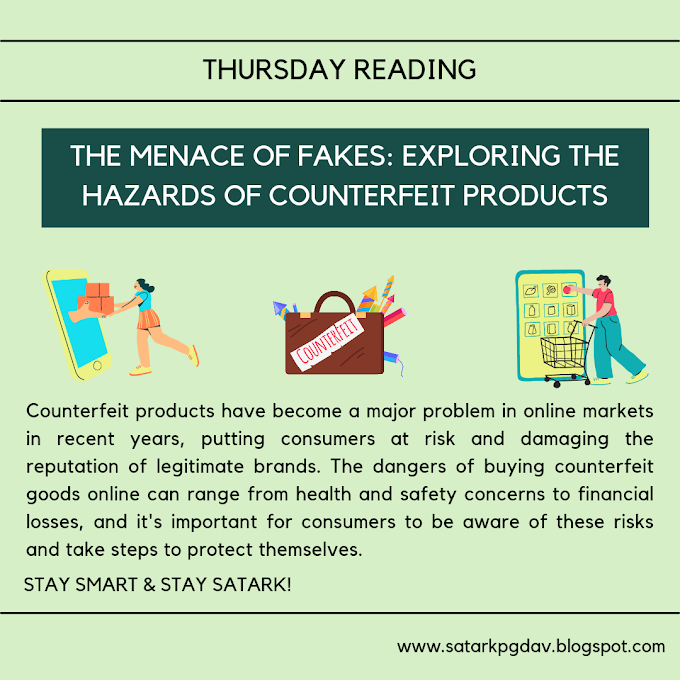Misleading and misleading advertisements are not just immoral; they distort the competition and of course, consumer preferences. False and misleading advertising violates a number of basic consumer rights: the right to information, the right to choose, the right to protection against unsafe goods and services and unfair commercial practices.
Types of cheating:
1. Photo Editing: Photographs by doctors are often used in the field of cosmetics and weight loss markets.
2. Hidden Fees and Additional Payments: Hidden investments can be a way for companies to trick an unsuspecting consumer into paying more for a product advertised at a certain price as a way to increase profits without raising the price on the real thing. The usual method of hidden costs and additional payments is "good printing" in advertising.
3. False Exposure of Quality and Origin: Another type of deceptive advertisement is when an ad misrepresents the quality and origin of the product. When an advertisement shows a product of a certain quality but we know that the product is flawed or not at the same level, they are advertising the product falsely.
4. Misleading Health Claims: The words "diet", "low fat", "sugar-free", "healthy", and / or "good" labels are often seen on the packaging, and are often associated with health-promoting products.
5. Bait-and-switch: Bait-and-switch is a deceptive form of advertising or marketing strategy that is often used to entice shop customers. The company will advertise its product at a cheap and attractive price that will attract customers (bait). Bait advertising is also commonly used in some contexts, for example, in online job advertisements to trick someone who may be selected about working conditions, pay, or a different alternative. And so on.
Several Other Rules and Regulations prohibit false and misleading advertising-
1. Drug Law and Magic Remedies (Opposition Ads):
The Drugs and Magic Remedies (Objectionable Advertisements) Act, 1954, basically prohibits four types of advertisements relating to drugs and magic. Section 3 of the Act states that no person shall participate in the publication of any advertisement for a drug or its use:
(a) Purchase of abortions for women or contraception for women.
(b) The maintenance or enhancement of the human sexual capacity.
(c) Correction of menstrual disorders in women.
2. Television Network Regulation Act and Rules:
The law mandates that all advertisements broadcast via cable television follow the Advertising Code under which it is created. Section 6, Chapter II of the Cable Television Networks (Regulation) Act, 1995 states that “No person shall broadcast on cable service, any advertisement unless that advertisement complies with the prescribed advertising code.
3. Food Security and Standards Act,2006:
This new law is relatively free to deal with false and misleading advertising about food.
4. Drugs and Cosmetics Act,1940:
The Drugs and Cosmetics Act, 1940 is an act of the Indian Parliament that regulates the import, manufacture and distribution of drugs in India. The main purpose of this action is to ensure that the drugs and cosmetics sold in India are safe, effective, and compliant with national quality standards.
5. Bureau of Indian Standards Act, 1986:
BIS is the National Standard Body of India established under the BIS Act of 2016 to co-ordinate the activities of suspension, marking, and quality assurance of goods and related matters, suspension, certification, and inspection.
6. Baby milk Replacement Act, Bottle Feeds and Baby Feeds (Production, Supply, and Distribution Act) and the Baby Milk, Food and Baby Food Amendment Act (Production, Supply, and Distribution Act) Act, 2002. :
This law prohibits the advertising and promotion of baby milk substitutes, feeding bottles, and infant formula because your promotion creates a false impression and thus misleads consumers into believing that infant formula is better or better than mother's milk.
7. Tobacco and other tobacco products (Prohibition of Advertising and Regulation of Trade and Trade, Manufacturing, Supply, and Distribution) Act, 2003 :
The law prohibits advertising / advertising of tobacco and other tobacco products.
Regulatory institutions established to ensure that advertisers do not mislead consumers :
• IRDA Regulations (Insurance Advertising and Disclosure), 2000
• Telecom Regulatory Authority of India
• Securities and Exchange Board of India
• Reserve Bank of India
• Indian Medical Council.
WHAT DO I DO AS A CONSUMER IF I SEE THE ADVERTISING?
You can register a complaint and a copy / video / audio of such an ad via the GOI web site at http://gama.gov.in to submit a Government notice.
Reference :








24 Comments
Acknowledging
ReplyDeleteKnowledgable
ReplyDeleteEnlightening
ReplyDelete👏🏼👏🏼👏🏼
ReplyDeleteGreat
ReplyDeleteSuperb
ReplyDeleteGreat one👏🙌
ReplyDelete👍👍
ReplyDelete✌✌
ReplyDeleteVery informative content 👍
ReplyDeleteInformative 🙌
ReplyDeleteInsightful 👍🤩
ReplyDeleteInformative
ReplyDeleteKnowledgeable ✌️✌️✌️
ReplyDeleteWow nice 👍👍👍
ReplyDeleteInformative 👍
ReplyDelete👍
ReplyDeletequite informative 👍🏻
ReplyDeleteGreat Work 👍
ReplyDeleteGreat
ReplyDeleteBeneficial 😌
ReplyDeleteAccurate content !
ReplyDeleteGood job guys
ReplyDeleteInformative blog
ReplyDelete